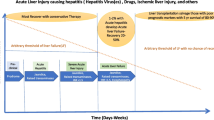Abstract
In an attempt to evaluate effects of liver injury and roles of iron metabolism on systemic fungal infection, experimental systemicCandida infection was produced in mice with galactosamine-induced liver injury. Survival rate and extent of fungal lesion are compared between mice with liver injury (Group 1) and ones without liver injury (Group 2). Median survival was 7 and 18 days in Group 1 and 2 respectively after 21 days observation. Mortality rate of Group 1 was significantly higher (P=0.05) than that of Group 2. This difference was reflected to the extent of fungal lesions in that they were extensive and disseminated, involving the multiple organs in Group 1 but predominantly localized to the kidneys in Group 2. UIBC (unbound iron binding capacity) and TIBC (total iron binding capacity), i.e., serum transferrin as well as serum iron levels were significantly lower in Group 1 as compared with those in Group 2. These results indicate that hepatic injury promotesCandida infectionin vivo and suggest that increased susceptibility toCandida in the presence of liver injury is, at least partially, attributable to low UIBC and/or TIBC.
Similar content being viewed by others
References
Abe F, Tateyama M, Shibuya H, Azumi N, Ommura Y. Experimental candidiasis in iron overload. Mycopathologia 1985; 89:59–63.
Artis WM, Fountain JA, Deicher HK, Jones HE. A mechanism of susceptibility to mucormycosis in diabetic ketoacidosis: transferrin and iron availability. Diabetes 1982; 31:1109–1114.
Artis WM, Patrusky E, Rastinejad F, Duncan RL Jr. Fungistatic mechanism of human transferrin forRhizopus oryzae andTrichophyton mentagrophytes: alternative to simple iron deprivation. Infect Immun 1983; 41:1269–1978.
Bezkorovainy A. Antimicrobial properties of iron-binding proteins. Adv Exp Med Biol 1981; 135:139–154.
Keppler D, Lesch R, Reutter W, Decker K. Experimental hepatitis induced by D-galactosamine. Exp Mol Pathol 1968; 9:279–290.
Larcher VF, Wyke RJ, Mowat AP, Williams R. Bacterial and fungal infection in children with fulminant hepatic failure: possible role of opsonisation and complement deficiency. Gut 1981; 23:1037–1043.
Okudaira M. Pathology of opportunistic fungus infection. Tr Soc Pathol Jpn 1985; 74:61–91.
Petro TM, Bhattacharjee JK. Effect of dietary essential amino acid limitations upon the susceptibility toSalmonella typhimurium and the effect upon humoral and cellular immune responses in mice. Infect Immun 1981; 32:251–259.
Shiraishi A, Arai T. Antifungal activity of transferrin. Sabouraudia 1979; 17:79–83.
Walsh TJ, Hamilton SR. Disseminated aspergillosis complicating hepatic failure. Arch Intern Med 1983; 143:1189–1191.
Weinberg ED. Systemic salmonellosis: a sequela of sideremia. Tex Rep Biol Med 1972; 30:277–286.
Weinberg ED. Iron withholding: a defence against infection and neoplasia. Physiol Rev 1984; 64:65–102.
Wright AC, Simpson LM, Oliver JD. Role of iron in the pathogenesis ofVibrio vulnificus infections. Infect Immun 1981; 34:503–507.
Young RC, Bennet JE, Geelhoed GW, Levine AS. Fungemia with compromised host resistance: a study of 70 cases. Ann Intern Med 1974; 80:605–612.
Author information
Authors and Affiliations
Rights and permissions
About this article
Cite this article
Abe, F., Nagata, S. & Hotchi, M. Experimental candidiasis in liver injury. Mycopathologia 100, 37–42 (1987). https://doi.org/10.1007/BF00769566
Accepted:
Issue Date:
DOI: https://doi.org/10.1007/BF00769566




